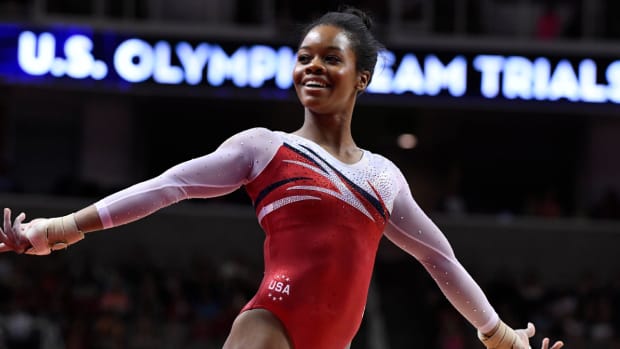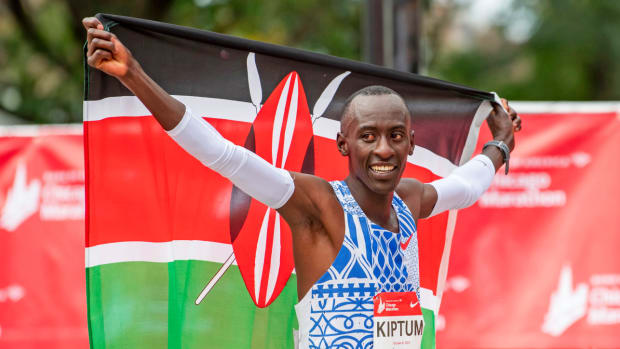The Good, the Bad, and the Ugly of Competitive Gymnastics

Adapted from What Is a Girl Worth: My Story of Breaking the Silence and Exposing the Truth about Larry Nassar and USA Gymnastics by Rachael Denhollander, releasing from Tyndale House Publishers September 10, 2019.
“What do you think?” my mom asked.
We’d been at an informational meeting, finding out what it would look like to become part of the competitive program.
“But what if you get injured?” Mom asked. “Your dad and I want you to be able to do what you love, but honey, nothing is worth your health and safety.”
In the end, we decided to go for it, but with my mom’s admonition ringing in my ears: “If your dad and I see anything that gives us a reason to be concerned for your health or safety, you’ll be out faster than you can imagine.” She knew pulling me from the sport would be hard and I wouldn’t like it. “But I’m willing to risk your anger toward me, if it means keeping you safe.”
Every day, I did my schoolwork and then went to the gym. As the days progressed, I felt more a part of the tightly knit little team. There were no ego fights, no competitions between gymnasts, no nasty remarks, and no poking fun at those who couldn’t back tumble to save their souls (and yes, that would be me). Instead, everybody helped one another, offering kind corrections and hugs when discouragement hit. We rejoiced at each other’s successes and helped each other along, and our coach helped facilitate it all. He was soft-spoken, mild mannered, reserved, and calm. His “very well,” spoken with a gradually thinning Eastern European accent, was the highest compliment we could get for a routine well done.
We were admonished almost daily by our coach to eat well and hydrate better, something I now know few coaches do.
To monitor our progress at the end of that summer, our coach put us through a variety of strength and flexibility tests, including rope climbs—a feat whereby a gymnast would extend her legs in a perfect L shape and climb up and down a massively long rope using only her arm strength and without touching the ground between climbs.
We actually loved testing days. It was fun to see the progress—see what we could really do. We cheered each other on—joined by our coach—poking goodnatured fun at one another when our arms or legs finally gave out at the end of each test. Practice was serious, and we were expected to be selfmotivated and diligent, but it was also fun and safe.
I didn’t know yet how unusual that was until two weeks later, when we had a guest gymnast train with us from another gym. She was young, around eleven years old. We were practicing tumbling passes, half of us at one corner, half at the other. My teammate and I had already taken our turns and were waiting for the rest of the team to make it across again. We held our breath as the new gymnast prepared to go. She had braces on both her wrists and another on one knee, and we knew she was fighting pain in her back and hamstrings too. Her mom had mentioned it to our coach before we started, insisting, “She’s used to working through it.”
She went again, throwing herself into a full twisting layout with incredible effort, and my teammate and I gasped.
“She’s going to get seriously hurt,” my teammate whispered to me. “This is not okay.”
And it wasn’t.
The guest gymnast was dangerously low, resulting in her slamming into the carpet with each landing, ankles and knees hyperextended to absorb the impact resulting from the incorrect angle. Worse, her head was much too close to the ground.
“She could break her neck,” my teammate said, shaking her head.
Even I could tell her layout was nowhere near tight enough to be practicing a twist when she was healthy, much less when she was injured.
“Who’s got her training like this?” I asked my teammate in disbelief. “Can’t they see how dangerous it is for her?”
“She’s one of John’s girls,” my teammate answered, resigned.
“Oh.”
We both knew what that meant.
“One of John’s girls” meant she was an athlete at Twistars, one of the most prominent gyms in the state. It was run by a man named John Geddert, and his reputation in the gymnastics community preceded him. His girls were often injured, much of the time seriously. Back, knee, and hamstring injuries plagued almost all of them, even at the lowest levels. Teammates and parents who’d been in the gymnastics world for years knew that he pushed them to perform skills they weren’t ready for, or even healthy enough to do, many times resulting in even worse injuries. He screamed. He berated. Some girls and parents at our gym had seen him throw things. It was whispered that sometimes this included his own gymnasts. And this behavior occurred not just during practices—he did it at meets, too, right in front of the parents, the USAG judges, and other coaches.
But no one stopped him.
Because John got results.
John’s gymnasts were just a means to an end. If one athlete was injured, there was another one ready to take her place.
If this guest gymnast was John’s athlete, there was nothing my teammates or our coach could do.
That was the year I read the book Little Girls in Pretty Boxes by San Francisco Chronicle sportswriter Joan Ryan. It was a damning indictment of the world of competitive gymnastics and figure skating, laying bare the physical, emotional, and even sexual abuse that the author alleged was almost a hallmark of these sports. Little girls, she argued, were worth nothing more than the medals they could win, so they were starved, abused, and used to keep their bodies and skills perfect—like “pretty boxes.”
With each chapter I read, I could feel a war within my soul. I knew some of the characterizations of coaches in the sport were true, because I’d seen them. The day I finished that book, my stomach was churning and my mind racing.
This can’t be true, I thought. This cannot all be true. The author has to have exaggerated. She must have picked the worst examples and left out all the good ones.
A gnawing feeling in the pit of my stomach kept tugging at me as I intentionally pushed down the thought that reality might actually be this ugly.
Nothing she’s saying is a secret, I thought. If she’s telling the truth, all the evidence is right here. It’s not hard to find. She found it. If she’s telling the truth, everyone at USAG knows this stuff is going on.
I took a deep breath and shook my head as if to shake the doubts and concerns away. “It can’t be true,” I repeated aloud. “Because if it is true and it is this bad, then everyone knows. If they knew, they’d stop it, right? Surely no one really believes medals are worth more than little girls.”
I repeated it again and again, comforting myself with that thought. This can’t be true, because if it was, someone would stop it. Someone would speak up for these girls.
Someone would stop it.
Someone would stop it.
Right?






